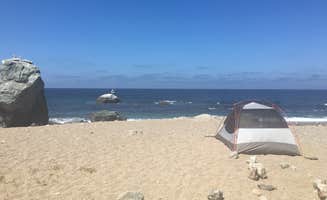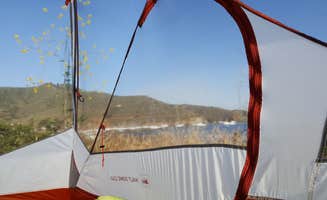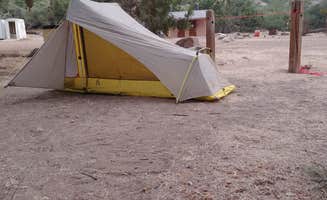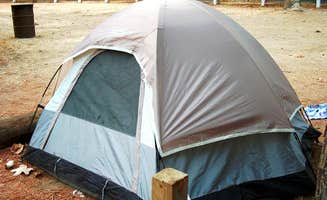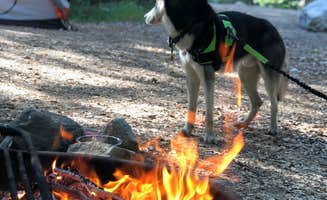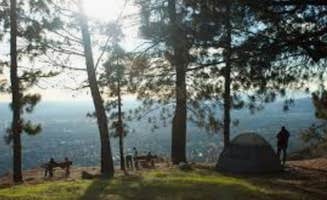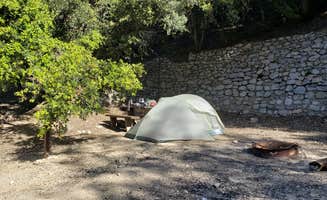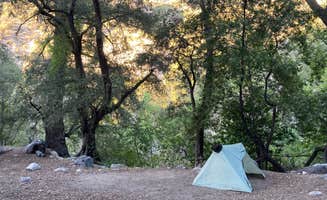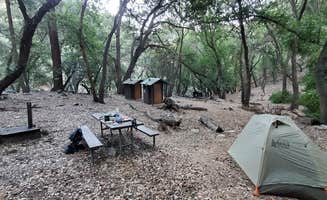Island camping offers the primary tent camping opportunities near Palos Verdes Estates, California with coastal sites typically ranging from 40-70 feet in elevation. Catalina Island camping requires transportation planning and typically costs $40-70 per night depending on location and season. The mainland provides limited alternatives through hike-in sites at nearby state parks.
What to do
Explore marine life: Snorkeling opportunities abound at Two Harbors Campground where the water clarity makes underwater viewing exceptional. "The beach is right off the campground, perfect for snorkeling and paddle boarding. There is also a rental office that can provide you with diving equipment, kayaks, and other fun water activities," notes one Two Harbors Campground visitor.
Hike interconnected trails: Trails on Catalina connect various campgrounds with viewpoints. "You can plan ahead to have a bundle of wood and a gallon of water waiting for you in a locker. The campground is a secluded beach with a rock wall on one end," explains a camper about their Parsons Landing Campground experience, which connects to the Two Harbors area via hiking trails.
Backpack for beginners: For those new to backpacking but wanting an experience near the mainland, Topanga State Park offers accessible options. "Musch Camp is an easy one mile hike from from the Trippet Ranch Parking Lot in Topanga State Park. If you want a longer hike you can hike up the East Topanga Fire Road and then drop down into Musch Camp on the Backbone Trail from Eagle Junction," writes a camper at Musch Trail Camp.
What campers like
Beach proximity: Campsites directly adjacent to swimming areas rank highest in visitor satisfaction. "Sites are right on the beach in a little cove. Check this one out," remarks a visitor at Little Harbor Campground, highlighting the immediate beach access that distinguishes Catalina camping from mainland options.
Wildlife encounters: Catalina Island's unique ecosystem brings animals right through camping areas. "Pricy but Fun...At night we had deer walking directly through our site as we were eating dinner (seriously on a few feet away). They didn't both anyone and were really cool to watch," reports a Two Harbors camper, describing the distinctive island wildlife experience.
Secluded spots: Higher elevation sites provide more privacy than beach locations. "Black Jack is the highest campground on catalina. Solid views and sites. I'd recommend it only for backpackers. A bit of a hike from Avalon and Airport in the sky, so pack what you need," advises one visitor to Black Jack Campground.
What you should know
Transportation logistics: Getting to island camping requires careful planning. "The boat to and from Catalina only operates on certain days so make sure they fit your camping schedule," warns a Two Harbors camper who also notes, "You do have to walk to your site which involves a few hills but I took a few breaks along the way and it was fine."
Wildlife protection measures: Island campers must secure food properly. "Make sure you secure your food. The squirrels and birds are ridiculous. They'll chew right through your pack to get your stuff. If you have a bear canister I'd make sure to bring it," cautions a Parsons Landing camper.
Water availability varies: Some sites require purchasing water in advance. "No water on site, you must bring your own. Water, firewood, and fire starter are available for purchase. You can buy them at two harbors, which is where they will give you a key for a locker that is at parsons landing which will have all those items," explains a visitor to Parsons Landing.
Tips for camping with families
Start with short hikes: Begin with accessible sites for children. "Did not expect the bathrooms to be very clean. They have running water to flush the toilets, and to wash your hands," notes a camper at Hermit Gulch Campground, the closest campground to Avalon on Catalina Island and accessible via shuttle.
Consider mainland options first: Families new to camping might start with shorter trips. "It's a nice little getaway without leaving the city, perfect for a one nighter or to backpack in with the kiddos. It's around 2 miles to camp on a leveled surface with a few stream crossings," suggests a visitor to Gould Mesa Trail Camp, a mainland option.
Plan for temperature changes: Island camping can experience significant day-to-night temperature swings. "The campground can get windy, so bring warm close and you have to carry it all in (well- on and off the boat, and if you want to wait they have a small shuttle to the campground although it's only about .5 mile walk)," advises an experienced Two Harbors camper.
Tips for RVers
Limited RV options: Most tent camping near Palos Verdes occurs on Catalina Island where RV camping isn't possible. "Beautiful beachfront camping steps from the sand. Dry camping with a dump station available. Great sunsets and beautiful sand," describes a visitor to Doheny State Beach Campground in Dana Point, one of the closest mainland RV-compatible options.
Know utility limitations: Even at mainland campgrounds, hookups may be restricted. "There is a $10 fee, they have a convenient credit card machine. Theres a hose there to use for clean up or flushing tank. Dump site is narrow so watch your sides," notes a Doheny State Beach camper about the dump station.
Prepare for tight quarters: Most coastal campgrounds have limited space. "The location is obviously great but the sites are on top of each other. No privacy and are definitely built for RVs and Trailers," observes a Doheny State Beach visitor about the site configuration.


